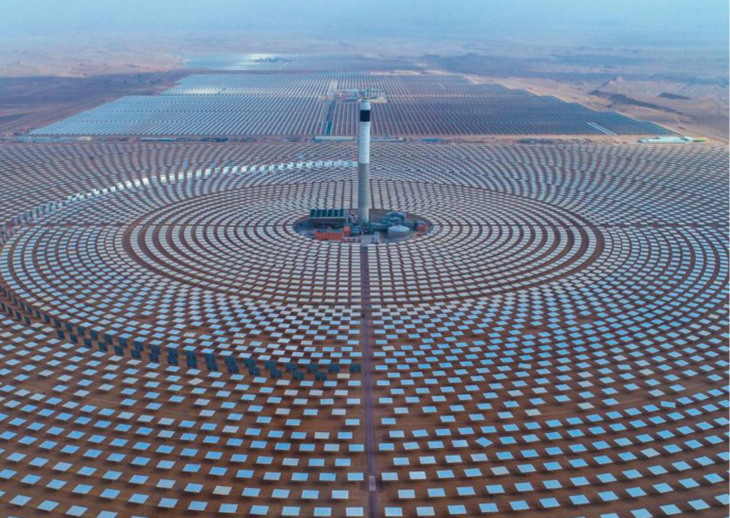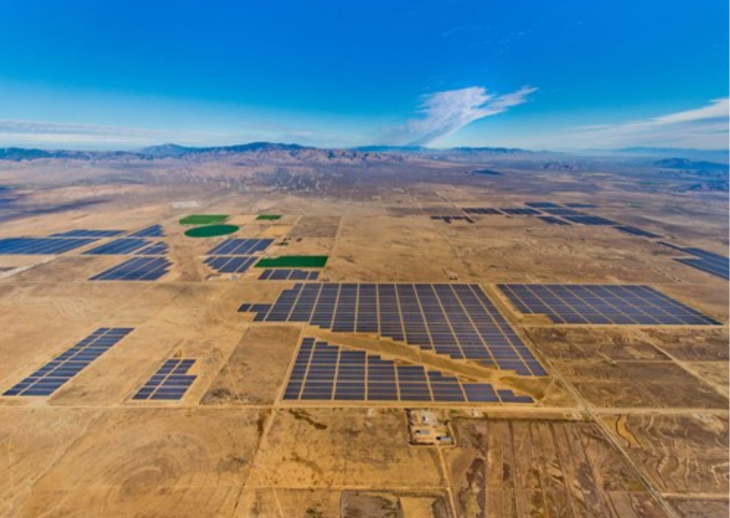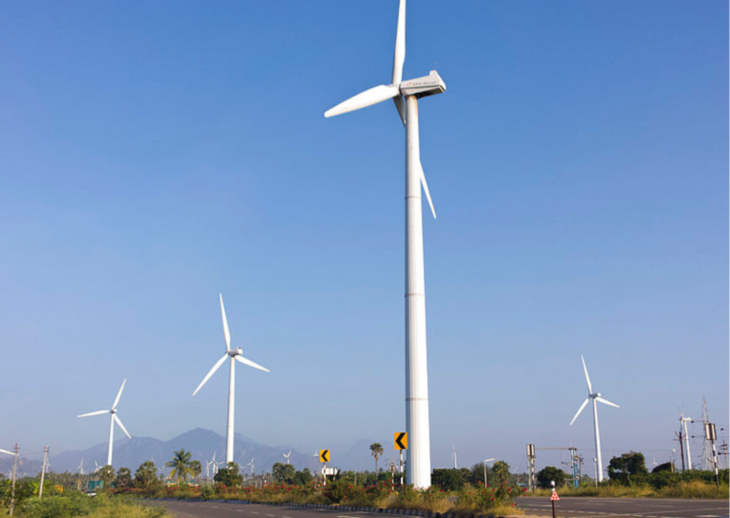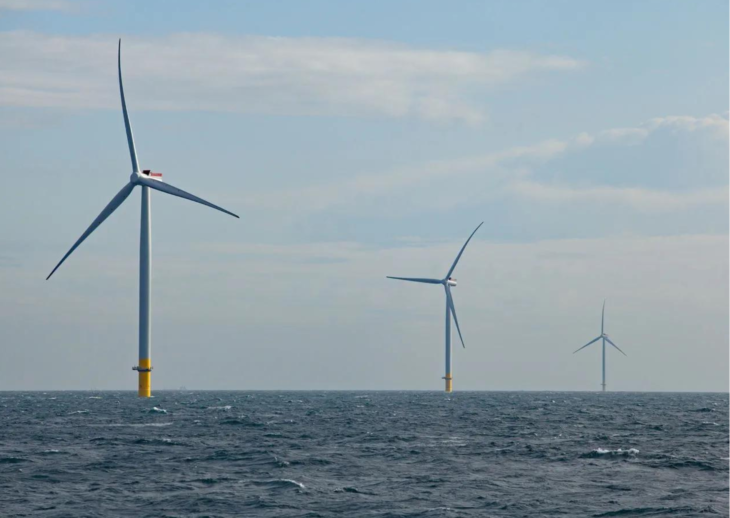The OGM Interactive Canada Edition – Summer 2024 – Read Now!
View Past IssuesIn today’s world, electricity has become an essential aspect of our daily lives. From powering our homes to fuelling our industries, it is crucial to understand the basics of electricity. One of the essential concepts in understanding electricity is the unit of power called megawatts. This article aims to explain what a megawatt is, how many megawatts are needed to power a home or ten homes, and what a 100-megawatt plant means.
A megawatt is a unit of power that measures the rate of energy conversion or energy transfer per second.
One megawatt is equivalent to one million watts. It is a common unit used to describe the power output of large power plants or energy-generating facilities.
To put it into perspective, one megawatt of power can light up approximately 1000 homes.
The megawatt is also used to describe the power consumption of large industrial facilities or commercial buildings.
The amount of power needed to run a home varies depending on several factors such as the size of the home, the type of appliances used, and the number of occupants.
On average, a typical home in North America uses approximately 900 kilowatt-hours (kWh) per month, which is equivalent to 30 kWh per day.
One megawatt-hour (MWh) is equivalent to 1000 kilowatt-hours (kWh).
Therefore, it would take approximately 33.33 megawatt-hours (MWh) or 33,333 kilowatt-hours (kWh) to power a home for a month.
Thus, to power a home for one day, it would require approximately 1.39 megawatts (MW) of power (33,333 kWh/30 days).
A 100-megawatt plant is a power-generating facility that has a power output capacity of 100 megawatts. These plants can produce energy using various sources such as coal, natural gas, wind, solar, or hydroelectric power.
For instance, a 100-megawatt coal-fired power plant can generate enough electricity to power approximately 100,000 homes for a day. Similarly, a 100-megawatt solar power plant can generate enough electricity to power approximately 60,000 homes for a day, while a 100-megawatt wind power plant can generate enough electricity to power approximately 30,000 homes for a day.
It is worth noting that the amount of power generated by a plant depends on several factors such as the efficiency of the technology used, the availability of the energy source, and the environmental conditions.
Renewable energy sources such as solar and wind power have gained immense popularity in recent years due to their clean and sustainable nature. Let’s take a closer look at how many megawatts are required for these two energy sources to generate electricity.
Solar power is one of the most widely used renewable energy sources globally. It involves capturing the energy from the sun’s rays and converting it into electricity. The amount of power generated by solar panels depends on various factors such as the amount of sunlight received, the efficiency of the solar cells, and the size of the installation.
According to the National Renewable Energy Laboratory (NREL), the average solar panel produces about 250 watts of power under ideal conditions. Therefore, it would take approximately 4,000 solar panels to generate one megawatt of power (250 watts x 4,000 panels). Some of the top solar projects around the globe include:
Noor Complex Solar Power Plant, Morocco: With a total capacity of 580 MW, the Noor Complex Solar Power Plant is one of the largest solar energy projects in the world. Located in Morocco’s desert region, the project consists of three phases with different solar technologies, including concentrated solar power (CSP) and photovoltaic (PV) solar panels.

Solar Star, United States: Located in California, the Solar Star project is a 579 MW solar power plant. It consists of two separate sites that use more than 1.7 million solar panels to generate electricity for more than 255,000 homes.

Longyangxia Dam Solar Park, China: The Longyangxia Dam Solar Park is one of the largest solar power plants in the world, with a total capacity of 850 MW. The plant is located in the Qinghai Province and consists of more than 4 million solar panels.
Bhadla Solar Park, India: Located in the state of Rajasthan, the Bhadla Solar Park is a 2,245 MW solar power project. The project is spread across 14,000 acres and consists of multiple phases that use both PV and CSP technologies.
Mohammed bin Rashid Al Maktoum Solar Park, UAE: Located in Dubai, the Mohammed bin Rashid Al Maktoum Solar Park is a 5,000 MW solar power project that will be completed in several phases. The first phase of the project was completed in 2013 and has a capacity of 13 MW.
Tengger Desert Solar Park, China: With a capacity of 1,547 MW, Tengger Desert Solar Park is one of the largest solar power projects in the world. The plant is located in the Inner Mongolia Autonomous Region and uses both PV and CSP technologies.
Kurnool Ultra Mega Solar Park, India: Located in the state of Andhra Pradesh, the Kurnool Ultra Mega Solar Park is a 1,000 MW solar power project. The plant is spread across 5,932 acres and uses more than 4 million solar panels.
Kamuthi Solar Power Project, India: The Kamuthi Solar Power Project is a 648 MW solar power plant located in Tamil Nadu. The plant covers an area of 2,500 acres and uses more than 2.5 million solar panels.
Topaz Solar Farm, United States: Located in California, the Topaz Solar Farm is a 550 MW solar power plant. The project consists of more than 9 million solar panels and generates enough electricity to power 180,000 homes.
Shams Ma’an Solar Power Plant, Jordan: The Shams Ma’an Solar Power Plant is a 52.5 MW solar power project located in southern Jordan. The plant uses more than 600,000 solar panels and generates enough electricity to power 35,000 homes.
Wind power is another popular renewable energy source that involves harnessing the power of the wind to generate electricity. The amount of power generated by wind turbines depends on various factors such as wind speed, turbine size, and the efficiency of the technology used. According to the International Energy Agency (IEA), a modern wind turbine with a capacity of 2-3 megawatts can generate approximately 6 million kilowatt-hours of electricity per year. Therefore, it would take approximately 333-500 wind turbines to generate one megawatt of power (6 million kWh/yr ÷ 8,760 hours/yr ÷ 2-3 MW).
Major wind projects around the world include the Gansu Wind Farm in China, which has a capacity of 6,000 megawatts, and the Alta Wind Energy Center in California, which has a capacity of 1,548 megawatts.
Gansu Wind Farm, China: The Gansu Wind Farm is the world’s largest wind power project, with a total installed capacity of 20,000 MW. It consists of multiple wind farms located in the Gansu province, and it produces enough electricity to power over 16 million homes.

Muppandal Wind Farm, India: The Muppandal Wind Farm is the largest onshore wind farm in India, with a total installed capacity of 1,500 MW. It is located in the state of Tamil Nadu and consists of more than 3,000 wind turbines.

Alta Wind Energy Center, United States: Located in California, the Alta Wind Energy Center is the largest wind farm in the United States, with a total installed capacity of 1,550 MW. It consists of multiple wind farms and uses more than 600 wind turbines.
Jiuquan Wind Power Base, China: The Jiuquan Wind Power Base is one of the world’s largest wind power projects, with a total installed capacity of 8,000 MW. It is located in the Gansu province and consists of multiple wind farms.
London Array, United Kingdom: The London Array is the world’s largest offshore wind farm, with a total installed capacity of 630 MW. It is located in the Thames Estuary and consists of 175 wind turbines.
Shepherds Flat Wind Farm, United States: The Shepherds Flat Wind Farm is one of the largest wind farms in the world, with a total installed capacity of 845 MW. It is located in Oregon and consists of more than 300 wind turbines.
Fântânele-Cogealac Wind Farm, Romania: The Fântânele-Cogealac Wind Farm is the largest onshore wind farm in Europe, with a total installed capacity of 600 MW. It is located in the Dobrogea region and consists of more than 200 wind turbines.
Horns Rev 2, Denmark: The Horns Rev 2 is an offshore wind farm located off the coast of Denmark. It has a total installed capacity of 209 MW and consists of 91 wind turbines.
Anholt Offshore Wind Farm, Denmark: The Anholt Offshore Wind Farm is an offshore wind farm located off the coast of Denmark. It has a total installed capacity of 400 MW and consists of 111 wind turbines.
Huitengxile Wind Farm, China: The Huitengxile Wind Farm is the largest onshore wind farm in China, with a total installed capacity of 900 MW. It is located in Inner Mongolia and consists of more than 300 wind turbines.
Offshore wind power has emerged as a significant player in the renewable energy industry due to its ability to generate high amounts of electricity in areas with strong and consistent winds. Here are some of the popular wind projects excelling around the globe:
Hornsea 1 (UK) – The largest offshore wind farm in the world, located off the coast of Yorkshire in the UK. It has a capacity of 1,218 MW and features 174 turbines.

Gansu Wind Farm (China) – The largest wind farm in the world, including both onshore and offshore wind turbines, with a total capacity of 7,965 MW. The offshore portion of the wind farm is located in the East China Sea.
London Array (UK) – Located off the coast of Kent in the UK, London Array was the world’s largest offshore wind farm when it was completed in 2013. It has a capacity of 630 MW and features 175 turbines.

Walney Extension (UK) – Located off the coast of Cumbria in the UK, Walney Extension has a capacity of 659 MW and features 87 turbines. It was completed in 2018.
Gemini Wind Farm (Netherlands) – Located in the North Sea, the Gemini Wind Farm has a capacity of 600 MW and features 150 turbines. It was completed in 2017.
Borssele Wind Farm (Netherlands) – Located in the North Sea off the coast of Zeeland in the Netherlands, Borssele Wind Farm has a capacity of 1,400 MW and features 94 turbines. It is expected to be fully operational by 2023.
Race Bank (UK) – Located off the coast of Norfolk in the UK, Race Bank has a capacity of 573 MW and features 91 turbines. It was completed in 2018.
Sheringham Shoal (UK) – Located off the coast of Norfolk in the UK, Sheringham Shoal has a capacity of 317 MW and features 88 turbines. It was completed in 2012.
Formosa 1 (Taiwan) – Located off the coast of Miaoli County in Taiwan, Formosa 1 has a capacity of 128 MW and features 22 turbines. It was completed in 2019.
Yunlin (Taiwan) – Located off the coast of Yunlin County in Taiwan, Yunlin has a capacity of 640 MW and features 80 turbines. It is expected to be fully operational by 2022.
Did you enjoy this article?